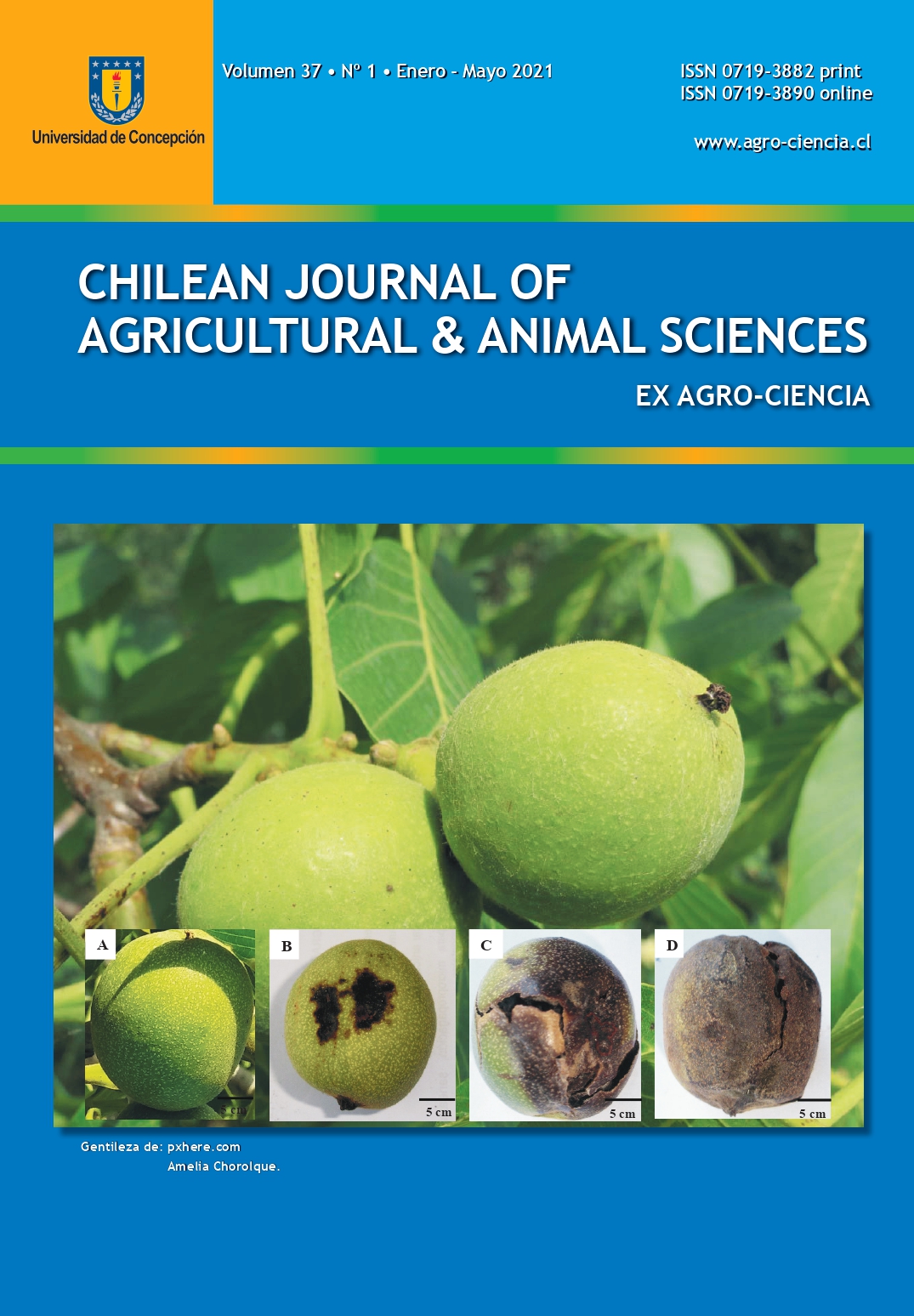RELATIONSHIP BETWEEN DENSITY OF STOMATA AND LENTICELS IN LEAVES AND FRUITS OF WALNUT (Juglans regia L.) AND THE SEVERITY OF Xanthomonas arboricola pv. juglandis
Abstract
Xanthomonas arborícola pv. juglandis generates severe damage to different walnut cultivars. The bacterium is carried through water and can enter plants through natural plant openings. The objective of this work was to analyze the anatomical characteristics of leaves and fruits of two walnut cultivars, Chandler and Franquette, and relate these traits to disease severity. Leaf disease severity (SevH) was determined using the modified Spielman’s damage scale. Stomatal density (DE), length and width of stomata were measured using a microscope, and the size and density of lenticels (DL) in the fruits were measured using a stereoscopic microscope, with an ocular micrometer. Fruit disease severity (SevF) was evaluated using a scale that included 4 levels of severity. The results showed significant differences in SevH and DE between cultivars. Stomatal size presented statistical differences only in length, being greater in Chandler. A strong correlation (r = 0.98) was found between SevH and DE. In addition, significant differences were observed between Chandler and Franquette in terms of SevF and DL. However, no differences were observed in lenticel size. The results obtained allow inferring that DE and DL should be taken into account when analyzing the susceptibility or tolerance of cultivars against walnut blight.
Downloads
Published
How to Cite
Issue
Section

This work is licensed under a Creative Commons Attribution 4.0 International License.







